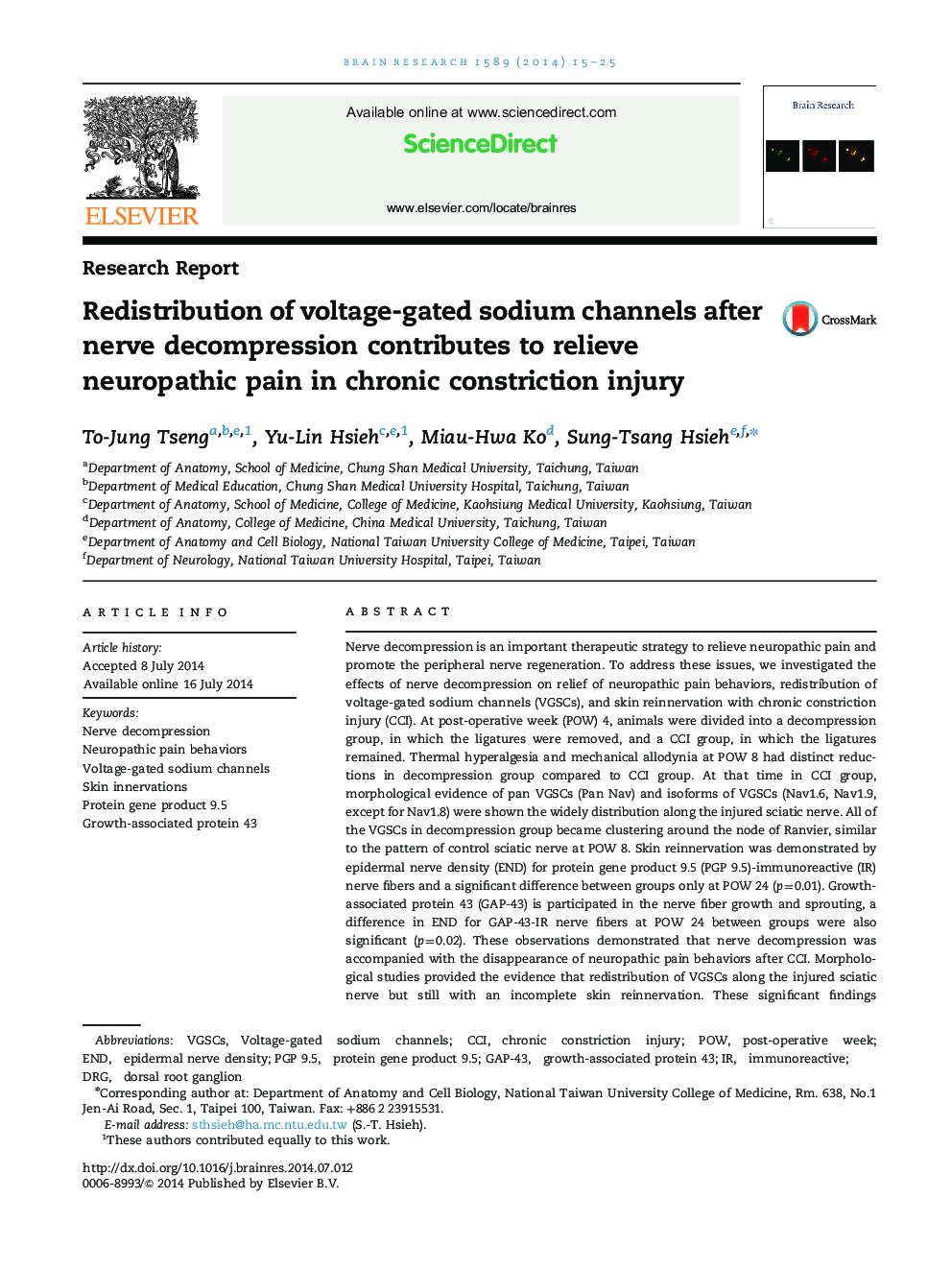| Article ID | Journal | Published Year | Pages | File Type |
|---|---|---|---|---|
| 4324051 | Brain Research | 2014 | 11 Pages |
•Neuropathic pain behaviors had significant reductions after nerve decompression in CCI.•Surgical decompression encouraged the redistribution of VGSCs along the injured sciatic nerve.•Moreover, the phosphorylated neurofilaments in injured nerve fibers were reappeared.•Nerve decompression in CCI promoted the regeneration of epidermal nerve fibers.•Skin reinnervation was not substantially related with the relief of neuropathic pain behaviors.
Nerve decompression is an important therapeutic strategy to relieve neuropathic pain and promote the peripheral nerve regeneration. To address these issues, we investigated the effects of nerve decompression on relief of neuropathic pain behaviors, redistribution of voltage-gated sodium channels (VGSCs), and skin reinnervation with chronic constriction injury (CCI). At post-operative week (POW) 4, animals were divided into a decompression group, in which the ligatures were removed, and a CCI group, in which the ligatures remained. Thermal hyperalgesia and mechanical allodynia at POW 8 had distinct reductions in decompression group compared to CCI group. At that time in CCI group, morphological evidence of pan VGSCs (Pan Nav) and isoforms of VGSCs (Nav1.6, Nav1.9, except for Nav1.8) were shown the widely distribution along the injured sciatic nerve. All of the VGSCs in decompression group became clustering around the node of Ranvier, similar to the pattern of control sciatic nerve at POW 8. Skin reinnervation was demonstrated by epidermal nerve density (END) for protein gene product 9.5 (PGP 9.5)-immunoreactive (IR) nerve fibers and a significant difference between groups only at POW 24 (p=0.01). Growth-associated protein 43 (GAP-43) is participated in the nerve fiber growth and sprouting, a difference in END for GAP-43-IR nerve fibers at POW 24 between groups were also significant (p=0.02). These observations demonstrated that nerve decompression was accompanied with the disappearance of neuropathic pain behaviors after CCI. Morphological studies provided the evidence that redistribution of VGSCs along the injured sciatic nerve but still with an incomplete skin reinnervation. These significant findings demonstrated a role of VGSCs in the pathogenesis of neuropathic pain, and gave an approaching in pharmacological basis of therapeutics.
